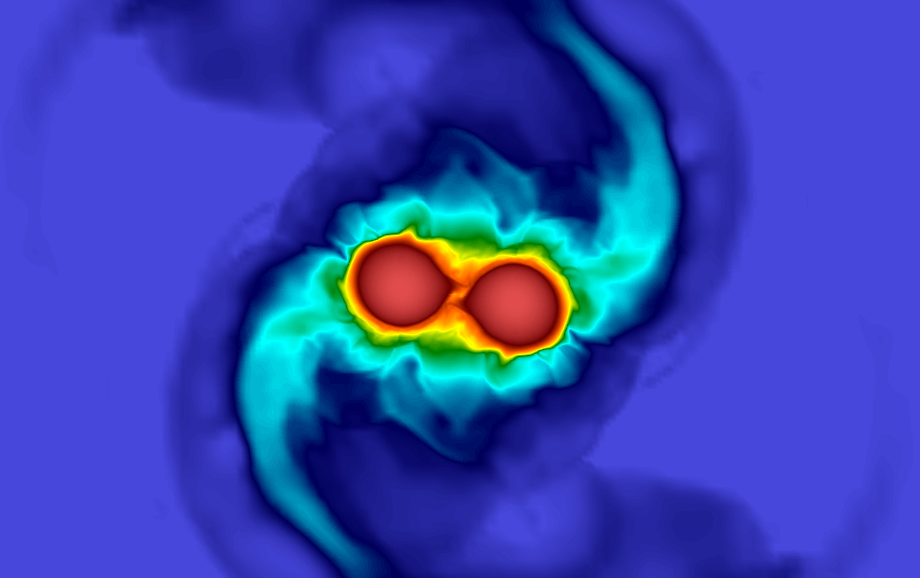Scientists from the University of Birmingham (UK) have developed a new model for determining the unique frequencies of gravitational waves emanating from binary neutron stars. This was reported in the journal Nature Communications.
The fact that gravitational waves can propagate in the Universe propagating with the speed of light was assumed even in the general theory of relativity proposed by Albert Einstein. They are space-time vibrations caused by large cosmic events, such as the fusion of several stars or stars and black holes. In 1962, the Soviet scientist Vladislav Pustovoit first proposed the use of a method for detecting gravitational waves using laser interferometers. However, for the first time such waves were recorded experimentally only in 2017 at the American observatory LIGO.
The nature and structure of neutron stars remain poorly understood to date. According to a number of hypotheses, these space objects are formed as a result of the explosion of Supernova stars and are, in fact, their residual nuclei. Neutron stars have an incredibly high density: with a diameter of 10-20 km, their mass is comparable to the mass of the Sun or exceeds it several times. Thousands of single neutron stars found in the electromagnetic spectrum are known, but they are almost impossible to investigate. The task is simplified when two such stars are attracted and merge into one. Under the influence of attractive forces in the resulting binary system, both merging stars are elongated and produce gravitational-wave oscillations at a certain frequency.
“Two stars, turning around each other, are deformed under the influence of gravity from their partner. Tidal forces cause certain oscillations within the stars, according to which we can draw conclusions about their internal structure. By calculating the parameters of such oscillations based on the data of the gravitational wave signal, we can obtain information about the fundamental nature and composition of these mysterious objects, ”explained Dr. Geraint Pratten, an employee of the Institute for the Study of Gravitational Waves at the University of Birmingham.
The model developed by the Birmingham research team provides unique information on such a binary system based on measurements of gravitational-wave oscillations. To verify the developed model, we used the waves obtained from the merger of the double neutron star GW170817.
- Computer simulation of the interaction of neutron stars of the binary system GW170817.
- © University of Birmingham
“Almost three years after the first observation of the gravitational waves of a binary neutron star, we find new ways to extract additional information about them from the incoming signals. The more information we can collect by developing even more complex theoretical models, the closer we will get to identify the true nature of neutron stars, ”added co-author and colleague Dr. Pratten Patricia Schmidt.
According to Geraint Pratten, according to the results of the only event studied, only limited information was obtained, since due to strong interference it was impossible to isolate the signal. However, he is confident that with the help of more advanced tools, scientists will be able to "more accurately measure the frequency of oscillations and get very interesting information."
According to researchers, the rapidly developing astroseismology (the science of stellar oscillations) is becoming the most important tool for studying the Universe. Astrophysicists believe that the next-generation observatory of gravitational waves, the discovery of which is scheduled for the 2030s, will be able to detect more binary neutron stars and study them in much more detail than now.

